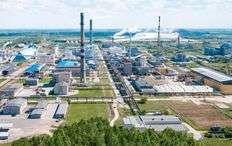- In 2010, over 90 million LTL was invested to increase production capacity and modernize equipment.
- The 2011-2016 investment strategy allocated about 9 million USD annually for equipment renewal and infrastructure renovation.
- In 2014, a new converter increased SO2 conversion in the sulphuric acid plant from 99.7% to 99.9%.
- Construction of a new MAP production plant with a capacity of 30,000 tons per year began in 2016.

Quality and Environmental Management
In 2003, Lifosa implemented Quality and Environment Management Systems meeting ISO 9001:2000 and ISO 14001:2004 standards. By 2005, the company joined the United Nations Global Compact initiative.
Technological Advancements
In 2007, Lifosa completed a project to utilize local and recovered process heat at the sulphuric acid unit, supported by EU structural funds. This included the installation of a Heat Recovery System (HRS) to produce more heat and electricity efficiently. In 2014, a new converter was installed in the sulphuric acid plant, increasing SO2 conversion from 99.7% to 99.9%.
Certifications and Standards
By 2007, Lifosa's Occupational Health and Safety Management System met OHSAS 18001:1999 requirements. In 2009, the company achieved GMP+ B1 and GMP+ B2 certifications.
Investments and Capacity Expansion
In 2010, Lifosa invested over 90 million LTL in new construction and equipment, significantly boosting production capacity. This included modernizing the feed phosphate manufacturing process, partially financed by EU structural funds, and building Lithuania's longest transporter (880 meters). A new warehouse with a 100,000-ton capacity for apatite was also constructed.
Strategic Investments
The 2011-2016 investment strategy planned annual allocations of about 9 million USD for equipment renewal and infrastructure renovation. In 2016, construction began on a new production plant for soluble crystalline mono-ammonium phosphate (MAP) with a design capacity of 30,000 tons per year.

